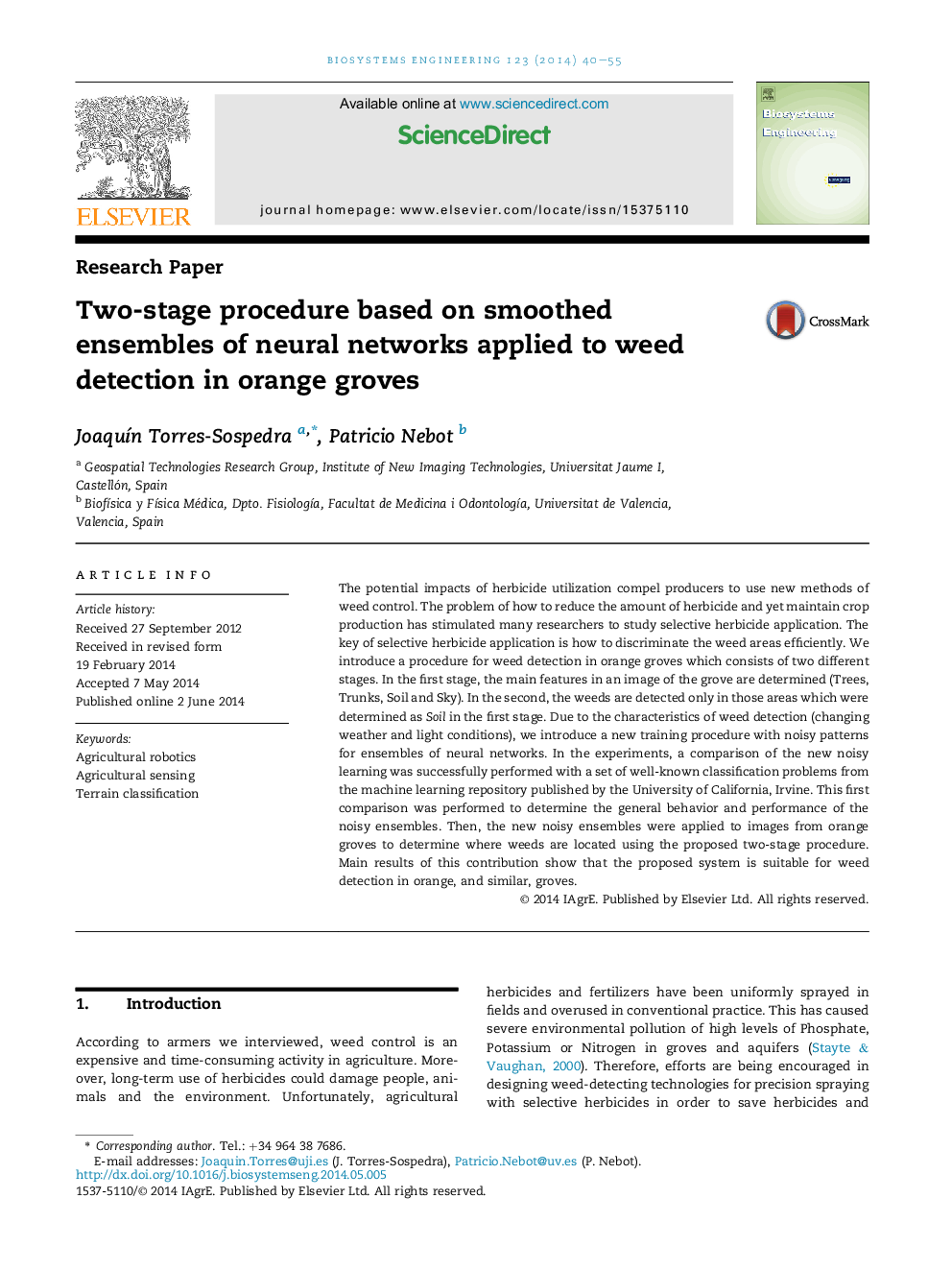| Article ID | Journal | Published Year | Pages | File Type |
|---|---|---|---|---|
| 1711195 | Biosystems Engineering | 2014 | 16 Pages |
Abstract
The potential impacts of herbicide utilization compel producers to use new methods of weed control. The problem of how to reduce the amount of herbicide and yet maintain crop production has stimulated many researchers to study selective herbicide application. The key of selective herbicide application is how to discriminate the weed areas efficiently. We introduce a procedure for weed detection in orange groves which consists of two different stages. In the first stage, the main features in an image of the grove are determined (Trees, Trunks, Soil and Sky). In the second, the weeds are detected only in those areas which were determined as Soil in the first stage. Due to the characteristics of weed detection (changing weather and light conditions), we introduce a new training procedure with noisy patterns for ensembles of neural networks. In the experiments, a comparison of the new noisy learning was successfully performed with a set of well-known classification problems from the machine learning repository published by the University of California, Irvine. This first comparison was performed to determine the general behavior and performance of the noisy ensembles. Then, the new noisy ensembles were applied to images from orange groves to determine where weeds are located using the proposed two-stage procedure. Main results of this contribution show that the proposed system is suitable for weed detection in orange, and similar, groves.
Related Topics
Physical Sciences and Engineering
Engineering
Control and Systems Engineering
Authors
JoaquÃn Torres-Sospedra, Patricio Nebot,
